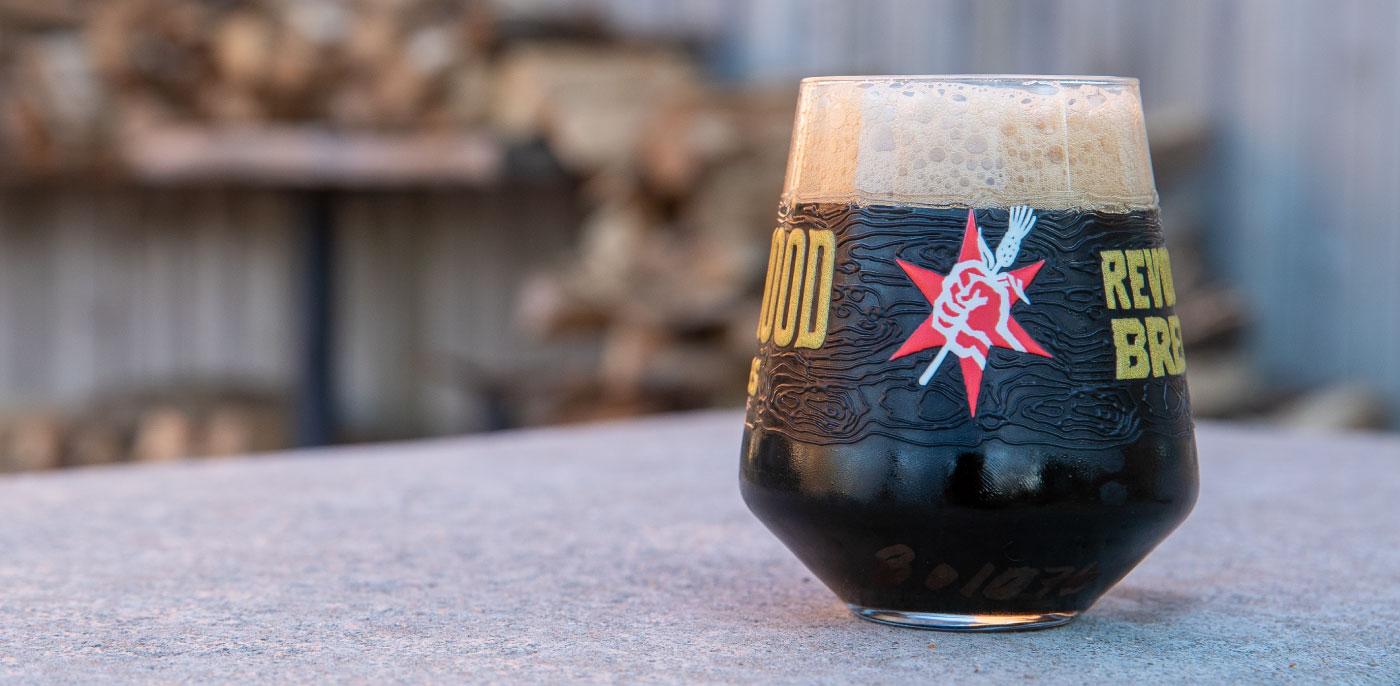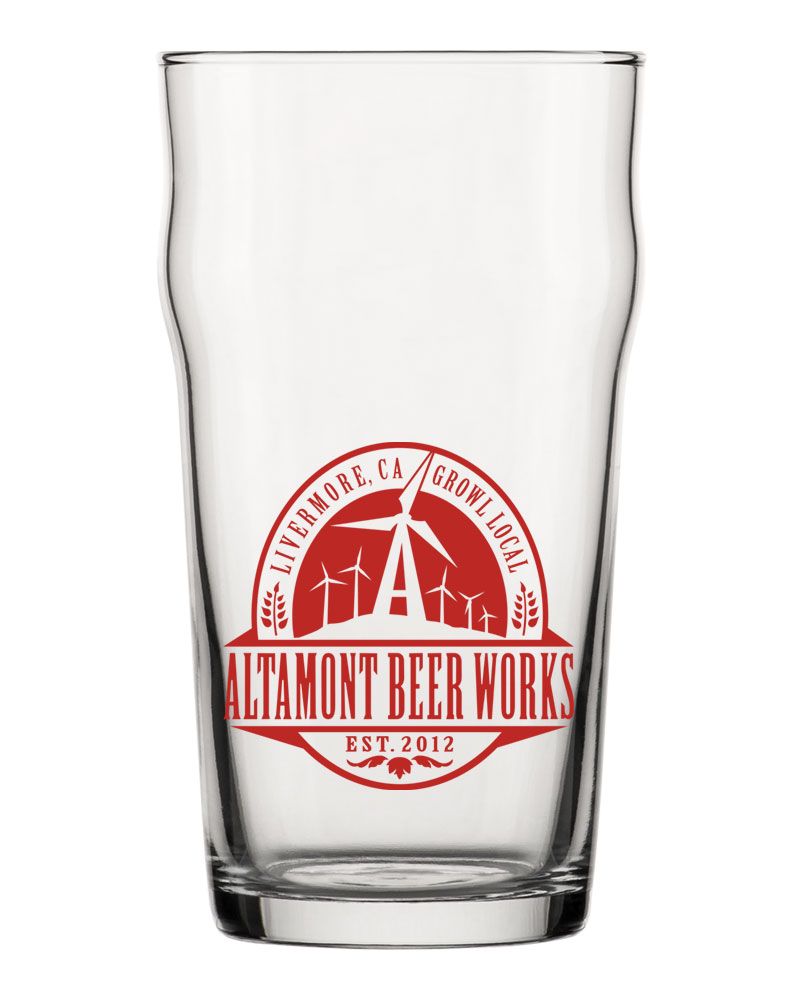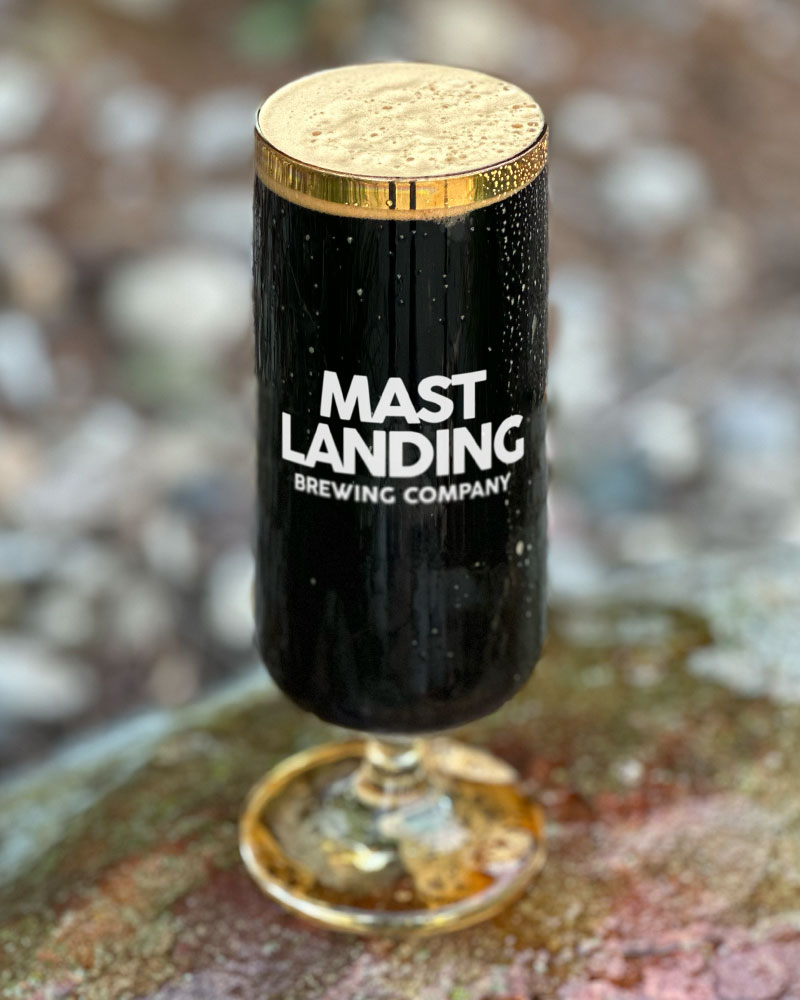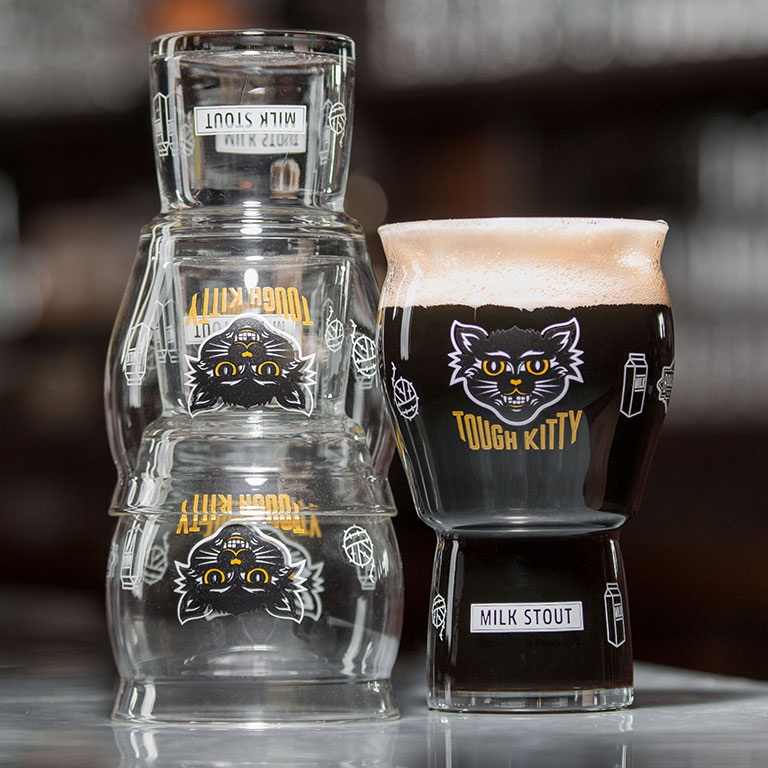
Deep Wood Series by Revolution Brewing, 41.5cl Rastal Harmony 40 Tumbler pictured above featuring Full Color Digital Emboss.
Winter is fast approaching, friends. And, with its pervasive chill and early nights, there's no better beer companion to warm the body under a warm coat than a rich, velvety stout.
Most hear “stout” and think Guinness, but this one beer has a rich and varied history. And, that varied history has encouraged the evolution of stout-perfect glassware. Long story short, it’s safe to say a stout is best appreciated with a touch of ceremony — there's a bit more to it than just popping open a can or bottle.
Just so we’re clear, this is what we mean by “stout”
Stouts these days are typically heavy or rich, and very dark, and they are most often served with a thicker-than-normal, creamier head. The classic stout head we now associate with a beer like Guinness is achieved through the use of nitrogen as a propellant. Even with nitrogen, though, stouts are still usually carbonated like most beers, but at a lower level.
Where did the word “stout” come from?
If you get right down to it, in English — and stouts are an English beer — the word stout at one time came to broadly mean strong. And, stouts were originally considered a stronger beer than what was commonly served. Depending on the reference, this beer came about in the 17th and 18th centuries and evolved from porters, a very common and popular beer of the day.
Okay, so what is a stout today?
This question is really best answered in its own blog post, but, in summary, there are now many stout varieties on the market. While Guinness produces (and the Irish in general tend to produce) what is maybe a more classic version of the beer — the darker, dryer, nitrogenated version — the English and other cultures went on to sweeten theirs with oats, milk, and other ingredients. Imperials, pastry, oyster stouts, even — there are many, many varieties to choose from.
Capturing all that history in the right glass
As you might imagine from all that history you just waded through, the glass you choose for your stout can significantly impact your drinking experience. For a beverage as rich and heady (pun intended) as this one, you’ll want a glass that helps the beer breathe so that all your senses can enjoy the offering.
Grandstand sells numerous stout-appropriate glasses, but below are four styles ideal for this wonderfully rich beer. Everything below really is a variation on a theme: bulging sides that help make a beer’s complexity readily available to the drinker. So, choose the glass shape that makes sense for your establishment’s ambiance.


Tulip Glasses
Characterized by their round base and slightly tapered neck that flares at the top, tulip glasses concentrate a beer's aroma, intensifying the tasting experience.


Snifters
These wide-bottomed, narrow-topped glasses, typically used for brandy or cognac, are equally suited for stouts. Like a tulip glass, their design also encourages the drinker to appreciate this beer's nuanced aroma.


Imperial Pint Glasses
Also known as a nonic glass, the imperial pint is a staple in British pubs. A bulge towards top makes it easy to grip, and it holds more volume, typically around 20 ounces. While it's versatile for many beer types, its spacious nature lets a stout breathe, enhancing its aroma and flavors.


Stemmed Beer Glasses
Very similar to tulip glasses, these often resemble wine glasses but are specifically crafted for beer. The stem allows the drinker to hold the glass without warming the contents. For stouts, this ensures the beer remains at an ideal temperature longer. Moreover, as with the other options above, a wide bowl promotes aromatic dispersion.
Pouring and serving stouts: Precision at every step
Stouts require a bit of care as they make their way into a glass, and many a bartender prides themselves on having the touch required. In the end, it comes down to four considerations: temperature, speed, angle, and patience.
Temperature matters maybe the most with this beer, and a stout should hover around 50 degrees Fahrenheit, and up to 60 degrees for higher ABV versions. Any colder than 45 or 50 degrees, and a stout might not fully reveal its flavors. If you are certain a stout is colder than 45 degrees, you can warm it briefly with your hands once it’s in the glass. Or, you can let it sit and breathe. Any warmer than 60 or 65 degrees, and a stout may seem curdled or sour.
After temperature, next comes that essential pour. Here’s where things can get a little tricky. If your stout is coming out of a can or bottle and is a highly nitrogenated version, like a Guinness, you may consider pouring hard — i.e. fast — right to the bottom of the glass. But, most bartenders will tilt a glass at a 45-degree angle under the tap or bottle and then gently pour the stout down the inside of the glass, straightening the glass as they fill. This is where a glass like an imperial pint shines — it gives the bartender room to work with. You can speed the pour or slow it, but you know with a larger glass that you have the room for that essential head to form.
Lastly, it’s important to not rush the glass to a server or customer. Most bartenders will set a stout aside for a moment or two as they pour another beverage. This allows the stout’s head to come to its iconic position and its flavors settle into place. A little nitrogenated foaming under the head as the beer arrives is fine, but the pour should not be creamy or caramel colored when it’s set in front of the customer.
So, when exactly is stout season?
For a stout lover, the answer to this question is probably “all year long.” But, your average customer’s tastes will change with the temperature. Summer cravings for pilsners and IPAs do give way to heavier beverages, and, generally, stouts hold their ground best during the colder months, from late autumn through early spring.
The good news is that the glassware you select for a stout can serve beers of other seasons, too. And, no matter your needs, Grandstand has a solution. Not sure what glassware will serve well across all seasons? That’s where our sales representatives shine. Reach out to us and we’ll help you select a versatile, durable glass that will help all your beverages impress.

